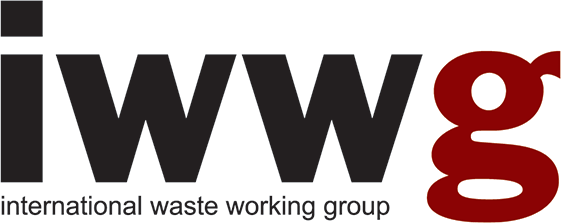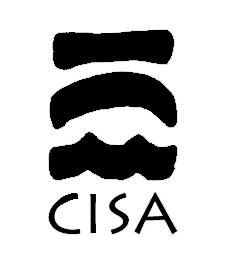RESOURCES FROM RECYCLING AND URBAN MINING: LIMITS AND PROSPECTS
- Available online in Detritus - Volume 02 / June 2018
- Pages 24-28
Released under CC BY-NC-ND
Copyright: © 2018 Cisa Publisher
Abstract
Direct and indirect effects (DIERec) of the recovery of secondary resources are in the range of 500 million tons per year in Germany; energy savings are 1.4 million TJ. These savings are between 10 and 20% of the total. The effects of materials recovery exceed those of energy recovery by far except for secondary plastic material, where DIERec from energy recovery is higher by factor of 2.7. Untapped potential for the recovery of secondary resources exists in the fine fraction of bottom ash from municipal solid waste incineration, mainly Cu and precious metals, and in urban mining.Keywords
Editorial History
- Received: 05 Mar 2018
- Revised: 11 Jun 2018
- Accepted: 18 Jun 2018
- Available online: 30 Jun 2018
References
Allegrini, E., Maresca, A., Olsson, M. E., Holtze, M. S., Boldrin, A., & Astrup, T. F. (2014). Quantification of the resource recovery potential of municipal solid waste incineration bottom ashes. Waste Management, 34(9), 1627-1636.
DOI 10.1016/j.wasman.2014.05.003
Baccini, P., & Brunner, P. H. (2012). Metabolism of the Anthroposphere, Analysis, Evaluation, Design. Cambridge, Massachusetts: MIT Press.
Buyny, S., & Lauber, U. (2009). Weiterentwicklung des Indikators "Rohstoffproduktivität" der nationalen Nachhaltigkeitsstrategie, Berechnung der Importe und Exporte in Rohstoffäquivalenten. Wirtschaft und Statistik(11), 1133-1145.
Ehrlich, P. A., & Holdren, J. P. (1971). Impacts of population growth. Science, 171, 1212-1217.
Fellner, J., Lederer, J., Purgar, A., Winterstetter, A., Rechberger, H., Winter, F., & Laner, D. (2015). Evaluation of resource recovery from waste incineration residues – The case of zinc. Waste Management, 37, 95-103.
DOI 10.1016/j.wasman.2014.10.010
Gehrmann, H.-J., Hiebel, M., & Simon, F. G. (2017). Methods for the Evaluation of Waste Treatment Processes. Journal of Engineering, 2017, 3567865 (3567861-3567813).
DOI 10.1155/2017/3567865
Gronholz, C. (2017). [Tartech Eco Industries AG, Berlin; personal communication].
Halada, K., Ijima, K., Katagiri, N., & Ohkura, T. (2001). An approximate estimation of total materials requirement of metals. Journal of the Japan Institute of Metals, 65(7), 564-570.
Holm, O., & Simon, F. G. (2017). Innovative treatment trains of bottom ash (BA) from municipal solid waste incineration (MSWI) in Germany. Waste Management, 59, 229-236.
DOI 10.1016/j.wasman.2016.09.004
Holm, O., Wollik, E., & Johanna Bley, T. (2017). Recovery of copper from small grain size fractions of municipal solid waste incineration bottom ash by means of density separation. International Journal of Sustainable Engineering, 1-11.
DOI 10.1080/19397038.2017.1355415
Huijbregts, M. A. J., Hellweg, S., Frischknecht, R., Hendriks, H. W. M., Hungerbühler, K., & Hendriks, A. J. (2010). Cumulative Energy Demand As Predictor for the Environmental Burden of Commodity Production. Environmental Science & Technology, 44(6), 2189-2196.
DOI 10.1021/es902870s
Kral, U., Lin, C. Y., Kellner, K., Ma, H. W., & Brunner, P. H. (2014). The Copper Balance of Cities, Exploratory Insights into a European and an Asian City. Jornal of Industrial Ecology, 18(3), 432-444.
Krausmann, F., Gingrich, S., Eisenmenger, N., Erb, K.-H., Haberl, H., & Fischer-Kowalski, M. (2009). Growth in global materials use, GDP and population during the 20th century. Ecological Economics, 68(10), 2696-2705.
Kuchta, K., & Enzner, V. (2015). Ressourceneffizienz der Metallrückgewinnung vor und nach der Verbrennung. In K. J. Thomé-Kozmiensky (Ed.), Mineralische Nebenprodukte und Abfälle 2 (pp. 105-116). Neuruppin: TK Verlag.
Maletz, R., Dornack, C., & Ziyang, L. (Eds.). (2018). Source Separation and Recycling, Implementation and Benefits for a Circular Economy (Vol. 63): Springer International Publishing.
Morf, L. S., Gloor, R., Haag, O., Haupt, M., Skutan, S., Lorenzo, F. D., & Böni, D. (2013). Precious metals and rare earth elements in municipal solid waste – Sources and fate in a Swiss incineration plant. Waste Management, 33(3), 634-644.
DOI 10.1016/j.wasman.2012.09.010
Muchova, L., Bakker, E., & Rem, P. (2009). Precious metals in municipal solid waste incineration bottom ash. Water, Air and Soil Pollution: Focus, 9, 107-116.
Saurat, M., & Ritthoff, M. (2013). Calculating MIPS 2.0. Resources, 2(4), 581-607.
DOI 10.3390/resources2040581
Simon, F. G., & Holm, O. (2017). Exergetische Bewertung von Rohstoffen am Beispiel von Kupfer. Chemie Ingenieur Technik, 89(1-2), 108-116.
DOI 10.1002/cite.201600089
Statistisches Bundesamt. (2017). Umweltnutzung und Wirtschaft, Ausgabe 2016 (www.destatis.de), Wiesbaden
Steger, S., Ritthoff, M., Dehoust, G., Bergmann, T., Schüler, D., Kosinka, I., Bulach, W., Krause, P., & Oetjen-Dehne, R. (2018). Ressourcenschonung durch eine stoffstromorientierte Sekundärrohstoffwirtschaft (Saving Resources by a Material Category Oriented Recycling Product Industry) (FKZ 3714 93 330 0). Umweltbundesamt (Federal Environmental Agency), Dessau (Germany)
Tanikawa, H., & Hashimoto, S. (2009). Urban stock over time: spatial material stock analysis using 4d-GIS. Building Research & Information, 37(5-6), 483-502.
DOI 10.1080/09613210903169394
Verein Deutscher Ingenieure. (2012). Cumulative energy demand (CED) - Terms, definitions, method of calculation (VDI 4600). Beuth-Verlag, Berlin
Wagner, J., Heidrich, K., Baumann, J., Kügler, T., & Reichenbach, J. (2012). Determination of the contributions of the waste management sector to increasing resource productivity and of the share recycling takes in the value-added chain displaying the paths of recovery of relevant waste (UBA - FB 001608, Texte 14/2012). Umweltbundesamt, Dessau-Roßlau
Wünsch, C., & Simon, F. G. (2018). The Reduction of Greenhouse Gas Emissions Through the Source-Separated Collection of Household Waste in Germany. In R. Maletz, C. Dornack, & Z. Lou (Eds.), Source Separation and Recycling - Implementation and Benefits for a Circular Economy. Berlin, Heidelberg: Springer International Publishing.
DOI 10.1007/698_2017_35




